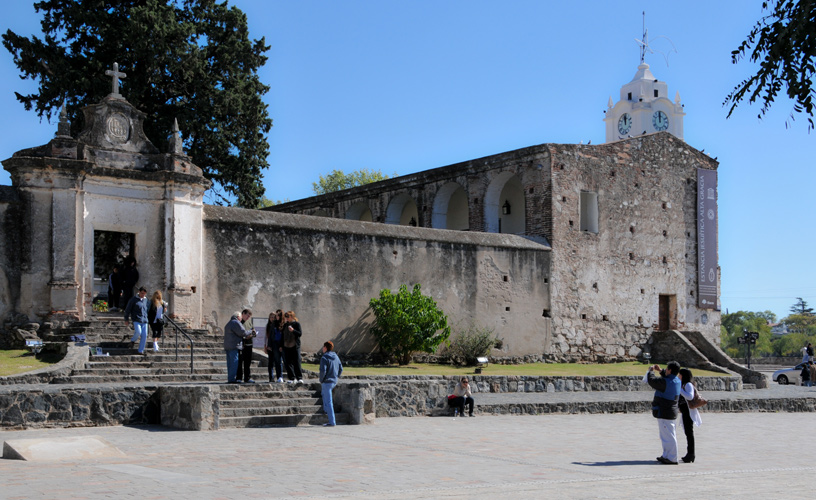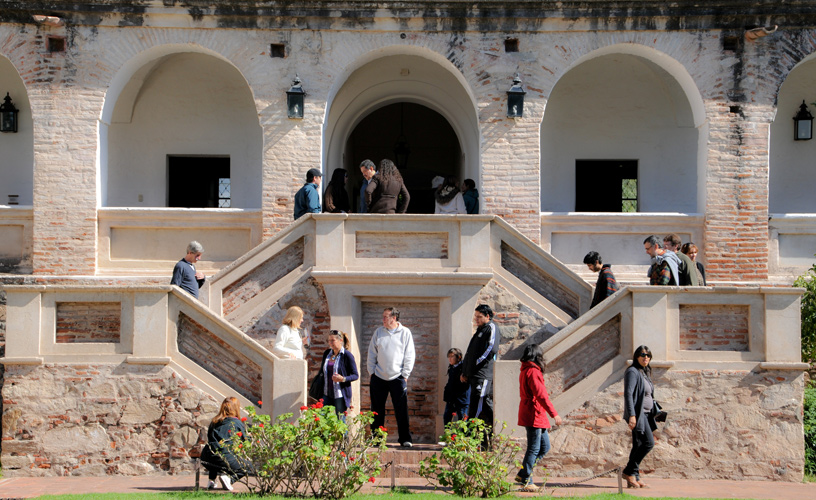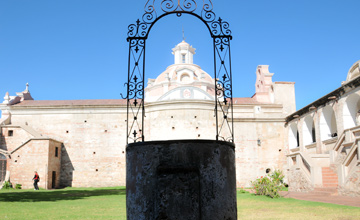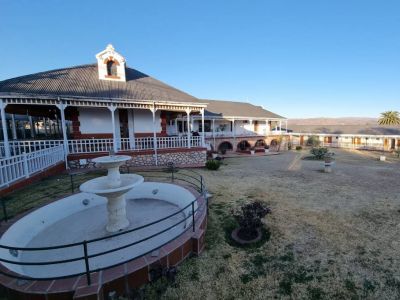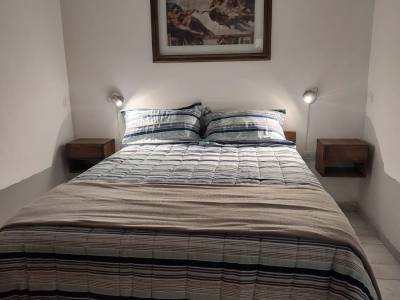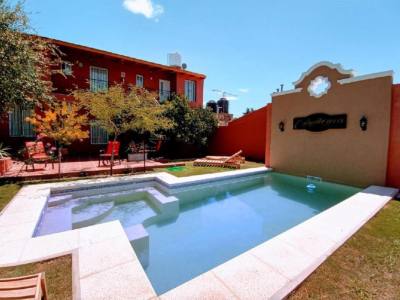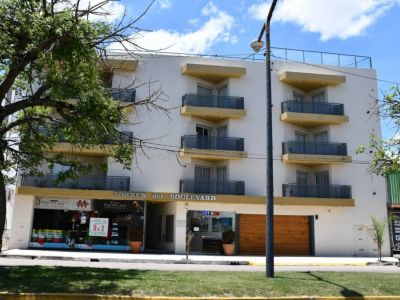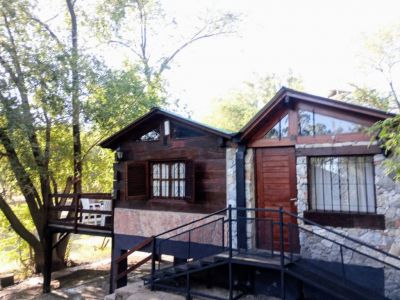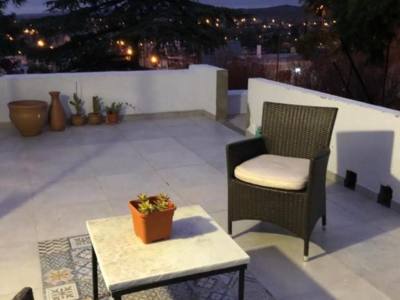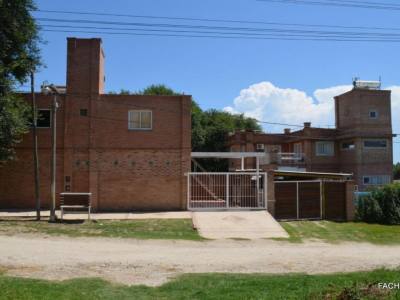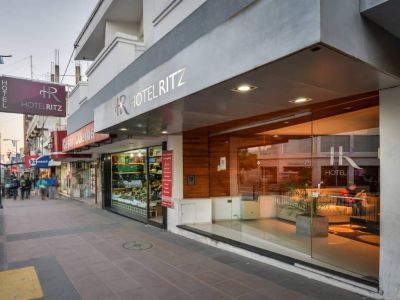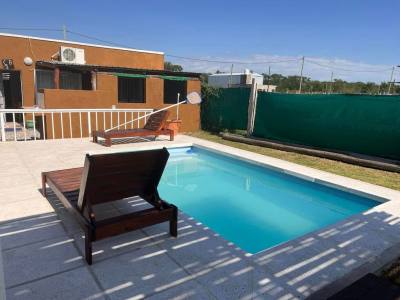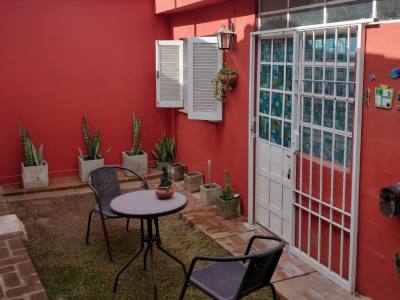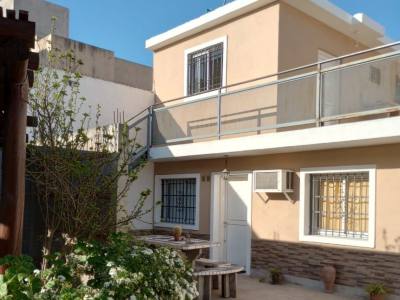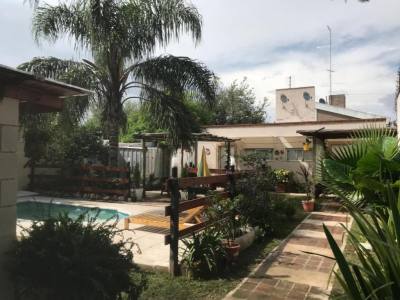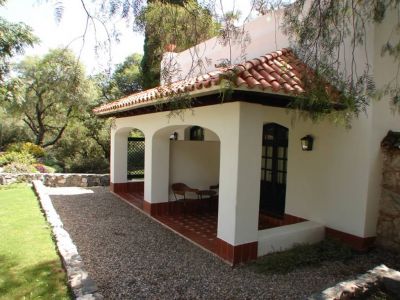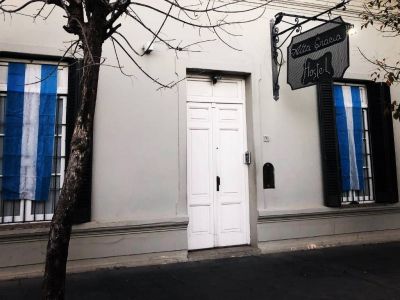The City of Alta Gracia was built around its famous Jesuit estancia, which lies opposite the main square. Its temple became the parish called Our Lady of Mercy and it is part of the present religious life of the area.
As we visited it, we became aware of how many years have passed ever since the 1700s, when the history of this place as we know it began. Next to the well in the center of its yard, we observed the old walls of the imposing gallery of the residence and we thought: 'how generous builders were in those days'.
We went up the old steps that lead to the main part of the house. We toured around all the rooms and got a general idea of the way the inhabitants of this residence used to live, as the furniture and personal belongings of the families that lived there are on display. Several dining-room and bedroom sets, even the communal lavatories stand out.
The Jesuit Estancia in Alta Gracia
The guide said: ´The Company of Jesus, a religious order founded by Saint Ignatius of Loyola, had these purely productive estancias built. The agricultural and cattle products would be traded and used to supply religious and educational Jesuit institutions such as Colegio Máximo de Córdoba'.
After passing from hand to hand, in 1810, it became the residence of Viceroy Santiago de Liniers for a short time and that is why this venue is also known as Casa del Virrey (House of the Viceroy).
The long process since the arrival of the Jesuits to the moment it was declared World Historical Heritage in 2000 becomes explicit throughout the visit to the various quarters in the museum.
All throughout the rooms, we saw the blacksmith's, the brick oven, the dam or tajamar to contain the creek course, the flour mills and the mechanisms used for each area of production.
In the same venue, we visited the temple, featuring a colonial Baroque style, with only one nave of blind walls and a pulpit with Rococo woodwork and gold leafing. The major altarpiece is a work of art that ends in the superior cornice with two carved angels.
Religious orders used art as an axis of religious life. Therefore, they mingled the European and native American models and created crucibles, saints and images of the Virgin combining these styles.
We left behind the long L-shaped gallery with old lamps and pointed windows to move to the backyard. This place has a direct access to the dam known as Tajamar and the present Public Clock.
Tajamar is the oldest dam in
We had one last look at this building raised in 1643, whose last owner, Manuel Solares, donated it to 'decent poor people'. Thus, a village emerged and today is known as the City of Alta Gracia.
We bade farewell to the Jesuit estancia located in the urban center of Alta Gracia, where yesterday and today are connected through a building featuring several hundred years.
Mónica Pons
Eduardo Epifanio
Contact of the excursion or tour
Museo de la Estancia Jesuítica de Alta Gracia
Manuel Solares, Padre D. Viera, Alta Gracia, Córdoba, Agentina
Phone: +54 3547-421303

